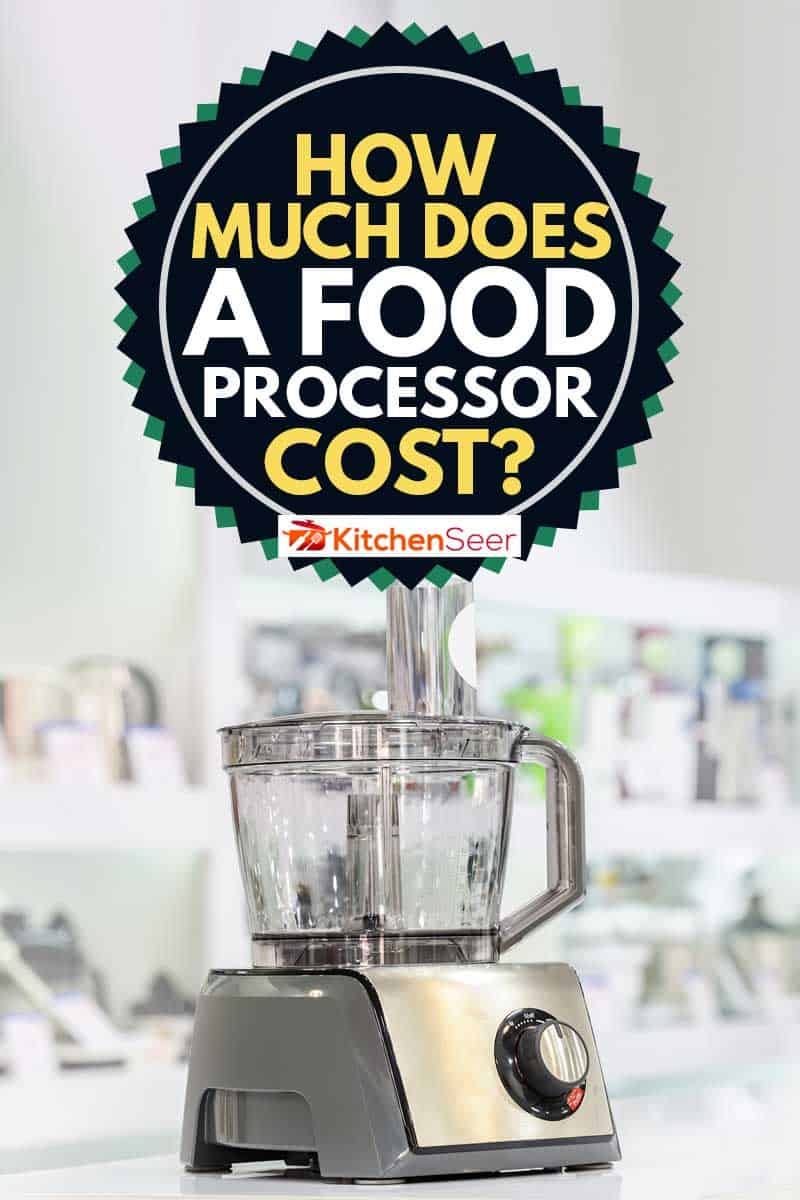 A good food processor could save you a ton of time in the kitchen—but is it worth your hard-earned cash? If you’ve never had a food processor before, then you’re probably wondering how it’s used and whether you would use it. Don’t worry; we’ve done all the research on these popular devices to help you determine whether you should buy one.
A good food processor could save you a ton of time in the kitchen—but is it worth your hard-earned cash? If you’ve never had a food processor before, then you’re probably wondering how it’s used and whether you would use it. Don’t worry; we’ve done all the research on these popular devices to help you determine whether you should buy one.
Depending on whether you are looking for a small chopper or professional level appliance, food processors can cost from $20 to $400. Commercial units can range into the thousands of dollars.
Anyone who’s debating whether to get a food processor needs to read the info below. In this post, we’re going to reveal what food processors can do, how to pick the best unit, and how food processors differ from blenders.
Pro Tips For Picking The Perfect Food Processor
Are you wondering whether a food processor is worth both your money and your countertop space? If so, you need to check out the details below. After explaining what a food processor can do, we’ll explain what to look for when comparing different products.
What Is A Food Processor Good For?
Food processors are phenomenal for pre-dinner prep. Whether you’ve got to slice, dice, or chop your veggies, you can count on your trusty food processor to get the job done.
But beyond prep work, food processors have a ton of unique kitchen applications. For instance, food processors are fantastic for making homemade whipped cream, pesto, and hummus. You could even use your food processor to crush almonds or cashews into creamy nut butter.
Many bakers also use food processors to help knead the dough for pizzas and pies. It’s also common for home chefs to shred cheese in their food processors.
A good all-around food processor that can get the job done, but not break the bank, like this one from Hamilton Beach, is what most people are looking for.
Click here to see this on Amazon.
The one area food processors don’t shine, however, is preparing liquids. If you fill these units with too much fluid, they could easily leak. So, people who love smoothies for breakfast and soups for lunch might not jibe with a food processor.
What Should You Consider When Buying A Food Processor?
Now that you have a better idea of what a food processor does, you’re probably wondering how to pick the best unit. Although there’s no ideal device for everyone’s circumstances, there are a few questions everyone could ask.
By the way, KitchenSeer.com recently published this helpful list of the 13 best Walmart food processors. Please be sure to read through this guide to discover the best models on the Internet.
Below, we’ll share a few questions to keep in mind when you’re shopping for a food processor.
What Attachments Are Included?
Remember, a food processor’s key selling point is its versatility. There should be a few blade attachments included with your processor so you could easily accomplish different kitchen tasks.
A basic chopper will most likely only hold 4 cups, and have only one chopping blade, limiting your processing options, but it will also be the least expensive. A machine like this is very handy if you don't really cook a lot, or have limited kitchen storage space.
Click here to see this on Amazon.
A general use food processor should come with at least a chopping blade, grating disk, and a slicing disk. The more attachments and more options provided, the more costly the unit. If cost is an issue for you, make sure that you assess your actual cooking needs.
How Big Is The Unit?
Another factor that can greatly influence the cost of a food processor is the size. Food processors are available in a wide range of sizes that are usually measured in cups. If you live in a large household or are interested in projects that require a lot of space (e.g., kneading dough), then you should start looking at units in the 11–16 cup range. For folks who are only concerned with using a food processor for smaller tasks, you might prefer units in the 7-cup range.
Just keep in mind, larger food processors tend to have the most versatility. Although these units may cost more, the extra space they provide may be worth it.
How Big Is The Feed Chute?
While you’re looking at a food processor’s overall capacity, take a few moments to examine its feed chute. Ideally, you want a food processor with multiple feed chute sizes for different cooking projects. If your unit doesn’t have that option, ask yourself whether it could comfortably slice whole tomatoes and potatoes.
Are There Pulse & Continuous Control Options?
Another reason food processors are so versatile is they offer chefs multiple speed options. A good food processor will have an easy-to-understand design that allows you to continuously chop or pulse your food on command.
When you are pulsing with a food processor, you want your device to be as responsive as possible. Do a bit of digging to see whether the unit you’re interested in shuts off immediately after you press the pulse button.
What’s The Motor Size?
Every food processor needs a fair amount of horsepower to complete its many duties. But what’s the perfect wattage for a standard processor?
Although you could find food processors in the 1,000 watts range, that’s usually above and beyond what you’ll need at home. This will typically be costlier as well. An excellent minimum power range is between 650–750 watts.
How Easy Is It To Clean The Processor?
Sure, your food processor may save you a ton of time before dinner, but what about afterward? Trust us. You don’t want to get stuck washing a unit with tons of difficult-to-clean nooks and crannies.
Look at a few pictures of your chosen product and envision washing it in your sink. Also, check to see if your food processor is dishwasher-friendly.
Is A Food Processor Worth It?

For most at-home chefs, a food processor is a worthwhile investment. These machines are well-suited for multiple projects ranging from prepping veggies and crushing almonds to kneading dough and shredding cheese. There are a wide variety of options available to make it easy to find one the will suit your cooking style and your checkbook.
If you are someone who likes to cook or bake a lot, you will get a lot of use out of a food processor. People who are only interested in smoothies, purees, or soups will prefer a blender.
Can You Wash A Food Processor In The Dishwasher?
Most food processor models are dishwasher safe. Always double-check your manufacturer’s instructions before putting parts inside your dishwasher.
Although you could technically put a food processor’s blades in a dishwasher, most chefs recommend cleaning them in the sink. After only a few cycles in the dishwasher, your blades will become dull.
Food Processors vs. Blenders: What Are The Differences?
Whenever people mention food processors, it’s impossible not to talk about blenders. Although both products have some similarities, they are not interchangeable. In this section, we’ll dispel all the confusion surrounding these devices.
What Is The Difference Between A Food Processor And A Blender?
To oversimplify a bit: blenders are for liquids; food processors are for prep work. Yes, there’s more nuance to these distinctions, but this is a simple way to keep them separated in your mind.
Blenders are built to handle a lot of liquid and usually have blades that aerate whatever you’re blending. This makes blenders ideal for creating smooth sauces, soups, purees, and smoothies.
As we’ve seen above, food processors aren’t so hot when it comes to handling liquids. Indeed, all food processors have a cutoff line, so you avoid fluids leaking into the center.
While you might get away with making a few dips in a blender, they aren’t great for chopping veggies or shredding cheese. Heck, blenders could be downright dangerous if you’re attempting more complicated tasks like kneading dough.
Bottom line: only invest in a blender if you love liquid foods like soups, smoothies, and sauces.
If you’re interested in learning more about blenders, then we suggest reading through KitchenSeer’s review of the Nutribullet Blender on this link.
Are There Combo Food Processor & Blender Units?
Yes, some manufacturers now offer food processor and blender combos. In most cases, however, these deals include both the standard food processor and blender. As of today, there’s no actual “two-in-one” blender/processor model. A set like this will tend more towards the higher end of the price range, due to all of the options it has available.
Here’s a popular food processor and blender set by Ninja.
Check out more info on this Amazon link.
Just For Kicks: What’s The Deal With A Juicer?
While we’re talking about the blender, we should briefly touch on its bitter rivalry with the glamorous juicer.
Beloved in the health & wellness community, juicers are machines that remove all the fiber from produce, so all you’re left with is, well, juice. Proponents of juicing claim it could help you get even more nutritious foods into your diet versus blending.
There are two juicer models: centrifugal and masticating. Centrifugal units are more affordable, but they are loud and don’t get the maximum juice out of your produce. Masticating juicers tend to squeeze out more fluid, but they are costly.
Here’s an example of a centrifugal juicer.
Click this Amazon link to find out more.
For comparison, here’s a masticating juicer.
Visit this Amazon link for more details.
Food Processor: A Cool Tool For At-Home Cooking
For many chefs, food processors have become an essential kitchen device. As you’ve seen, these machines can handle many tasks, but should you invest in one? If you’re looking to save some time prepping meals in the kitchen, then the answer is usually “yes.”







![An unrecognizable man putting vegetables into blender, preparing healthy smoothie at his kitchen, Does A Blender Work As A Food Processor? [The Answer Might Surprise You!]](https://kitchenseer.com/wp-content/uploads/2021/05/An-unrecognizable-man-putting-vegetables-into-blender-preparing-healthy-smoothie-at-his-kitchen-250x250.jpg)
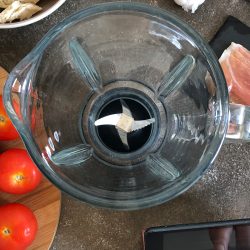
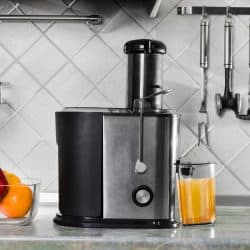
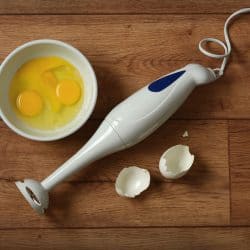
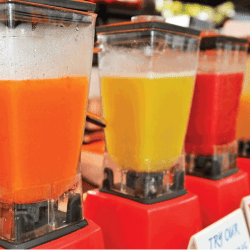
![Food processor blender or coffee grinder blades on wooden table, What Are The Parts Of A Food Processor? [5 Main Sections]](https://kitchenseer.com/wp-content/uploads/2020/10/Food-processor-blender-or-coffee-grinder-blades-on-wooden-table-250x250.jpg)